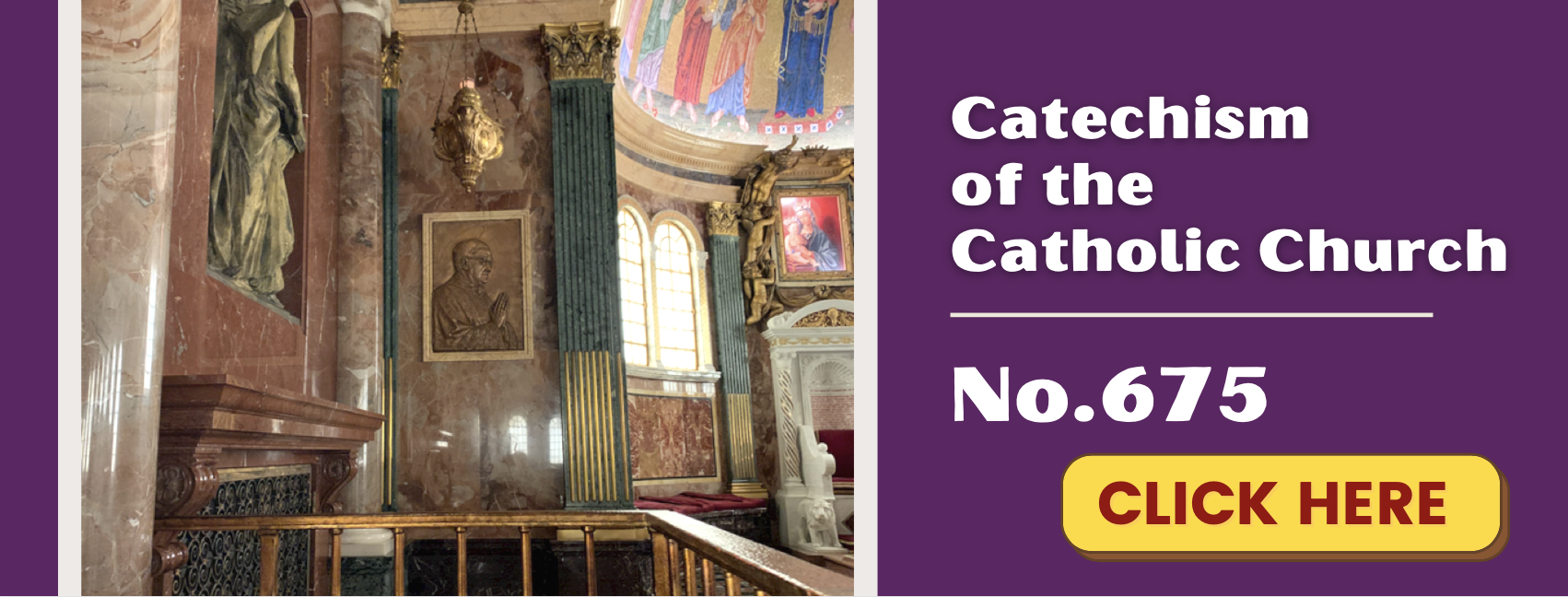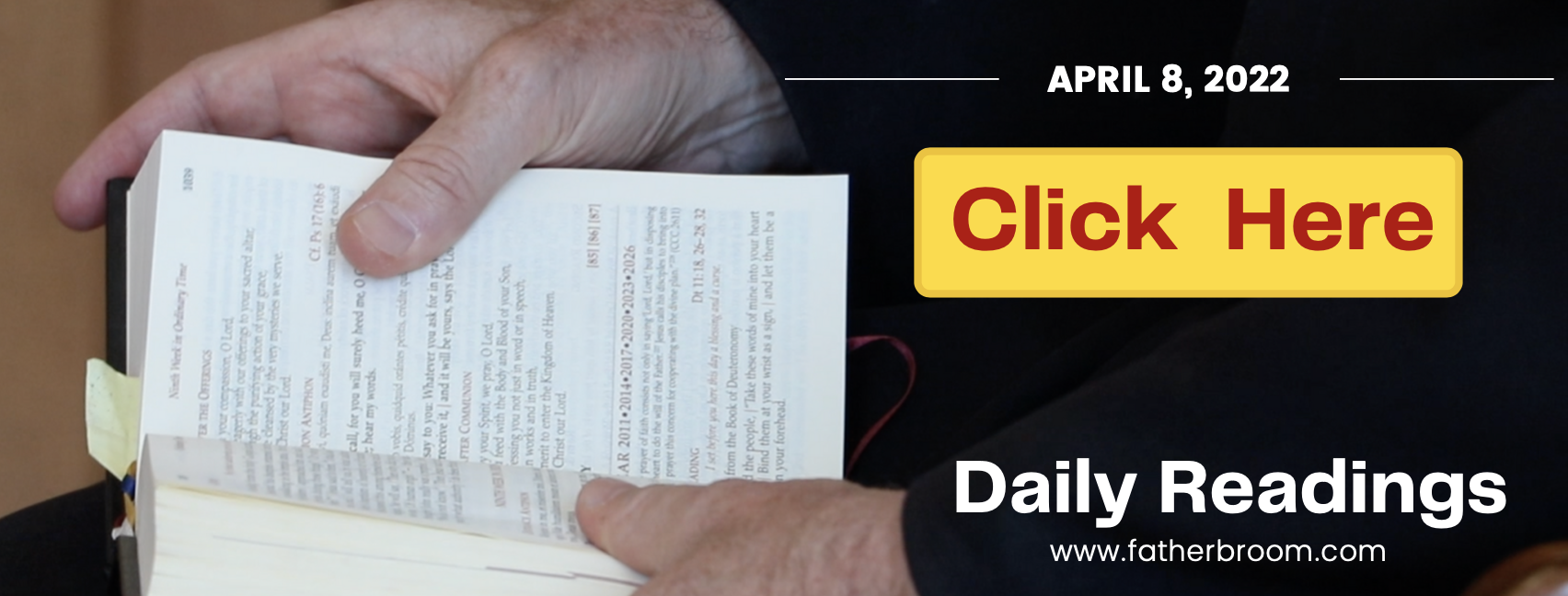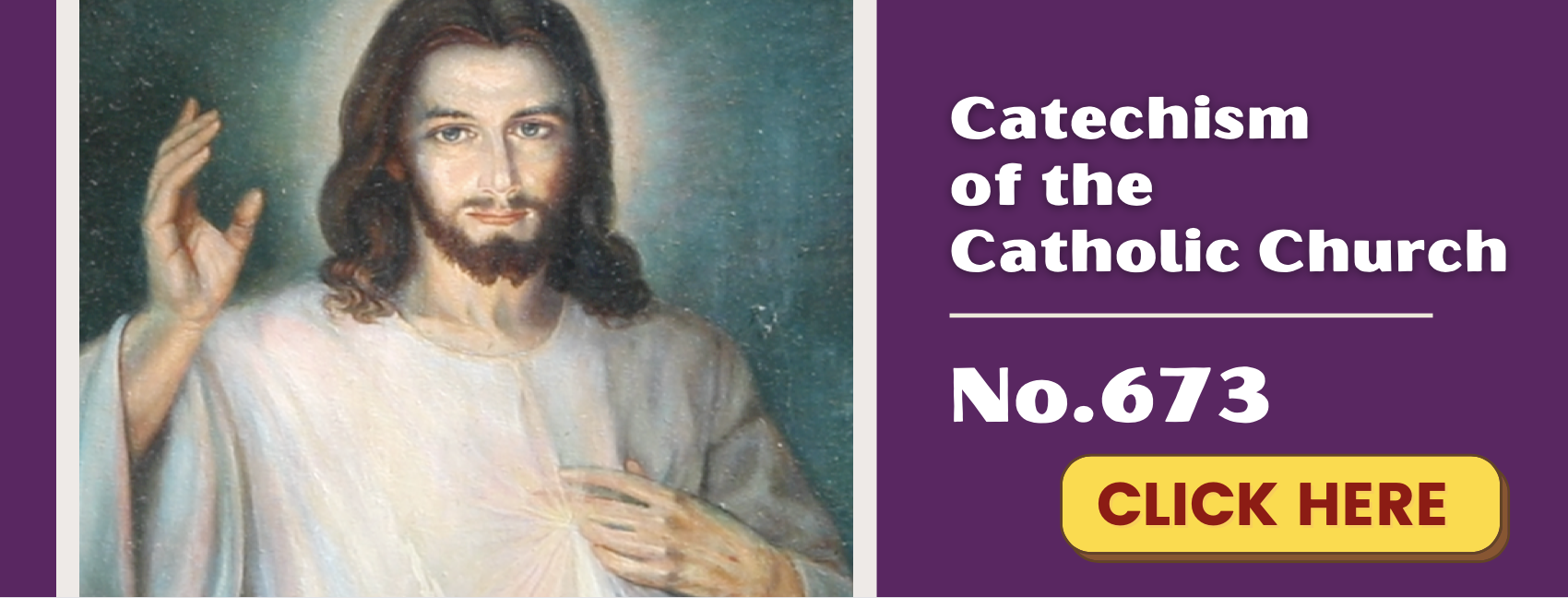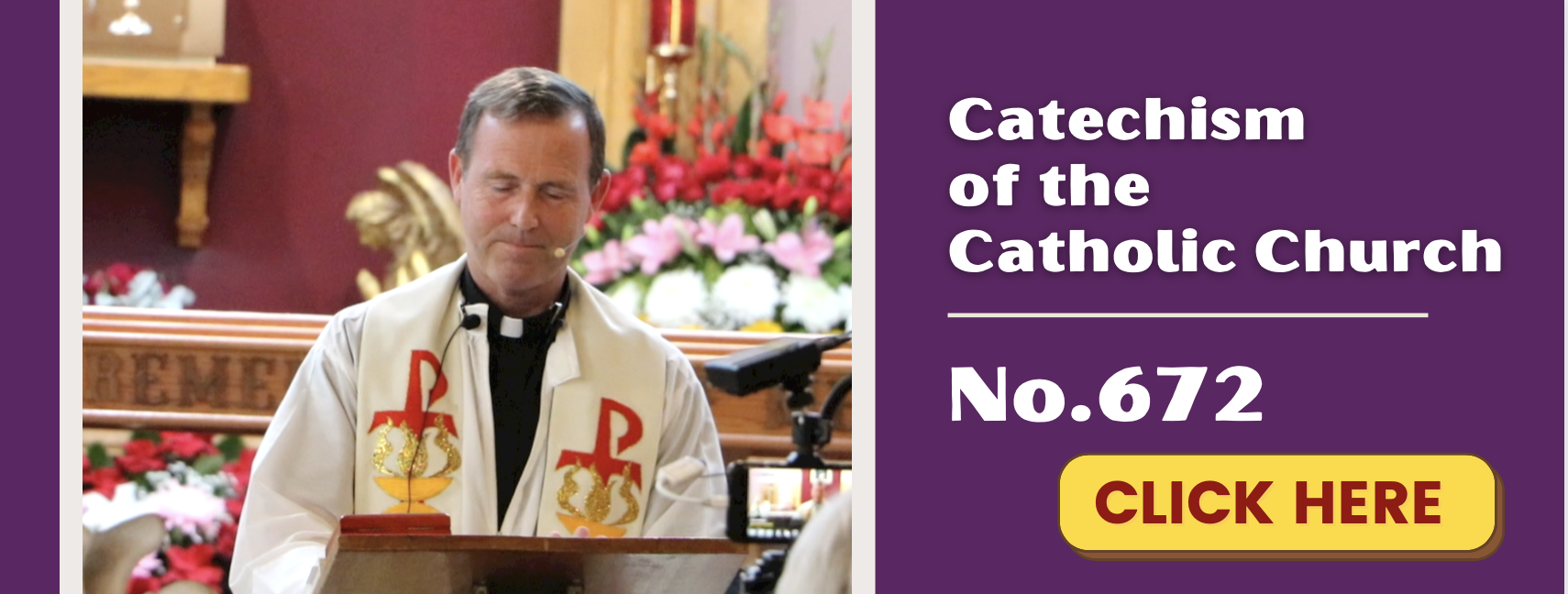Saturday of the Fifth Week of Lent



“For greater things you were born.” (Ven. Mother Luisita)
SATURDAY, April 9th Jn. 11: 45-56 Verse before the Gospel: “Cast away from you all the crimes you have committed says the Lord, and make for yourselves a new heart and a new spirit.”
Let us prepare for entering Passion Week by meditating upon and contemplating Mary’s Seven Sorrows! Let us beg for the grace to suffer with and for our Sorrowful Mother and Suffering Savior!
THE SEVEN SORROWS OF MARY by Fr. Ed Broom, OMV
The Church invites us to contemplate the Passion of Jesus through the eyes and Heart of Mary. Classically, there are Seven Sorrows of Mary. Especially the Franciscans have a charism for promoting this powerful devotion. These seven sorrows start when Jesus is a little baby in the arms of Mary, up through Jesus’ mangled, bloody, sword-pierced Body in the arms of Mary at the foot of the cross, if you like, the Pieta of Michelangelo!
THE CHRONOLOGICAL LIST OF THE SORROWS OF MARY. The following is an orderly, chronological listing of the Seven Sorrows of Mary, from the Infancy of Jesus up to His death and lying in the arms of Mary, concluding with His burial.
1. PROPHECY OF SIMEON—A sword will pierce your heart!
2. FLIGHT INTO EGYPT—Herod in pursuit to kill the Child Jesus.
3. JESUS LOST IN THE TEMPLE—Mary’s sorrow in losing Jesus for three days!
4. MARY MEETS JESUS ON THE WAY UP CALVARY—Mary’s eyes meet the eyes of Jesus as He carries His cross up Calvary.
5. CRUCIFIXION OF JESUS—Mary stands at the foot of the cross witnessing the crucifixion of her Beloved Son.
6. LOWERING OF JESUS INTO MARY’S ARMS—Now dead, the lifeless Body of Jesus is lowered into the arms of His Mother Mary.
7. BURIAL OF JESUS—Separation of Jesus and Mary with the burial of Jesus.
In each one of these Seven Sorrows of Mary, we are invited to enter into the mind, soul, and heart of Mary to experience at least some of Mary’s sorrow, and then to console her. If we truly love a person, we want to share our life with that person, in good times and in bad, in health and in sickness, in riches and in poverty, until death do we part (marriage promises). Our love for Jesus and Mary should far transcend our love on a human and natural level. As the Song of Songs expresses it: Love is stronger than death.
Therefore, we will offer some concrete means by which we can contemplate the sorrows of Mary and at the same time offer her our consolation. The lover rejoices with the beloved, but is also willing to weep and suffer with the pains and sorrows of the beloved.
1. THE PROPHECY OF SIMEON.
“A sword of sorrow will pierce your heart so that the thoughts of many may be revealed.” A concrete way in which you can console the Heart of Mary in this contemplation would be to go to confession in honor of Mary. Mary’s powerful prayers and presence will attain for you the grace to examine your conscience and reveal your inmost secrets of conscience to the priest, who represents Jesus. The end result will be absolution, forgiveness, and re-birth into a life of grace. Mary, whose title is full of grace, rejoices every time you open up your mind, heart, and soul to Jesus’ Mercy in Confession.
2. THE FLIGHT INTO EGYPT.
“Saint Joseph got up and taking the Mother and the Child fled into Egypt…” How can you console the Heart of Mary in this painful sorrow? We all live in perpetual spiritual combat, spiritual warfare. You can console the Heart of Mary by imitating good Saint Joseph and fleeing, in this case from moral evil—called temptation to sin. When you are tempted to sin, run to Mary; throw yourself into the arms of Mary; seek refuge in the Immaculate Heart of Mary. She is your sure refuge!
3. LOSING AND FINDING JESUS IN THE TEMPLE.
“After three days of sorrowful searching, Mary and Saint Joseph find Jesus in the temple listening to and teaching the Jewish teachers.” What might be a concrete application of this third sorrow of Mary? Many mothers and fathers over the past fifty years have lost their children spiritually. That is to say, despite the hard efforts of their parents, children still wander from the faith, no longer assist at the Holy Sacrifice of the Mass, and worse still, willfully choose a sinful lifestyle. Just as Jesus was lost and Mary suffered excruciating pains, so do parents suffer intensely at the moral and spiritual loss of their children whom they love so much! Like Saint Monica and the eventual conversion of Saint Augustine, why not pray, and pray, especially many Rosaries so that your lost and wandering prodigal sons and daughters, these lost sheep of the fold, will return. In other words, through the Holy Rosary, place these children in the Heart of Mary.
4. JESUS MEETS MARY ON THE WAY OF THE CROSS.
As Jesus climbs Calvary on the way to His crucifixion, He meets His Mother Mary. A concrete manner in which to console Mary is to imitate Jesus in carrying your crosses. However, with this important stipulation: share your crosses with Mary first. The mere presence of Mary as she contemplated Jesus with the cross on His shoulders, consoled Jesus. Dig deep into your heart so as to identify your biggest cross, as well as your smaller ones. Then bring these crosses to the Sorrowful and Immaculate Heart of Mary. Imitating a little child in the arms of his mother, talk to Mary about these crosses. She is very interested in helping you carry your crosses with faith, trust, and love. Often our crosses seem overwhelming. They are just too heavy, thorny, and splintery to carry because we are trying to carry them by ourselves, without inviting Mary to help us! Call on Mary! We adore you, O Christ, and we praise you, because by your holy cross you have redeemed the world.
5. JESUS SUFFERS AND DIES ON THE CROSS—WITH MARY AT THE FOOT OF THE CROSS.
In this most painful mystery of the crucifixion, passion, suffering, and death of Jesus, Mary, Our Lady of Sorrows, was present the whole time. Jesus spoke from the cross to Mary and Saint John: “‘Woman, behold thy son; son, behold thy mother.’ From that time on, the disciple took her into his home. ” (Jn. 19:26-27) In that moment—in the person of Saint John—Jesus gave Mary to the world as our universal spiritual Mother, as your Mother. Your way to console Mary in this painful mystery? Imitate Saint Juan Diego and the little boy in the movie Marcelino, Pan Y Vino, aka The Miracle of Marcelino (1955 version). In what way? Very simple: become like a small child and tell Mary everything that is happening in your life. Then trust totally and unreservedly in the Maternal Presence and Heart of your loving Mother Mary.
6. JESUS PLACED IN THE ARMS OF MARY.
The artist Michelangelo depicted this masterfully in the famous Pieta. The film producer Mel Gibson presented this in the movie The Passion of the Christ in a powerful and moving fashion. How can we console the Heart of Mary? To love Jesus is to love Mary; they are inseparable! The suffering Body of Jesus is present in His Mystical Body, the Church. In a most powerful and special way, the Body of Christ comes to us in the greatest of all the Sacraments, the most Holy Eucharist, within the context of the Holy Sacrifice of the Mass. The greatest single gesture that we can do on the face of the earth is to receive Jesus, the Son of Mary, in Holy Communion. Therefore, a superb way in which we can console the Heart of Mary is to pray to receive Jesus in Holy Communion through Mary’s most pure and Immaculate Heart. No heart ever received Jesus with greater love than the Immaculate Heart of Mary.
7. JESUS TAKEN FROM MARY AND BURIED IN THE TOMB.
In this last of the Seven Sorrows of Mary, we witness the separation of Jesus and Mary when Jesus’ lifeless body is placed in the tomb. Without a doubt, one of the best ways we can console and rejoice the Sorrowful and Immaculate Heart of Mary is to beg Mary for the grace to die daily to sin—the greatest evil that exists! Then, of greatest importance, beg Mary for the grace of a holy and happy death. By constantly praying to Mary the Hail Mary and the Holy Rosary, with Mary’s help we are preparing ourselves for the most important moment in our life: the very moment that we die! This will determine our eternal destiny—eternal salvation or eternal loss. We trust that through Mary’s prayers we will attain eternal salvation.
May this be our prayer every night and the moment we die:
Jesus, Mary, and Joseph, I give you my heart and my soul.
Jesus, Mary, and Joseph, make my heart like unto thine.
Jesus, Mary, and Joseph, assist me in my last agony.
Jesus, Mary, and Joseph, I breathe forth my soul unto thee.
O Sacrament most holy, O Sacrament divine, all praise and all thanksgiving be every moment thine!
Copyright 2022 Oblates of the Virgin Mary / St. Peter Chanel Church, Hawaiian Gardens, CA







